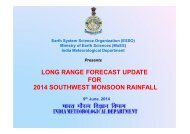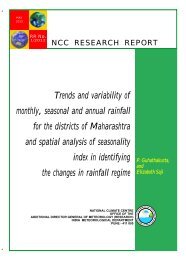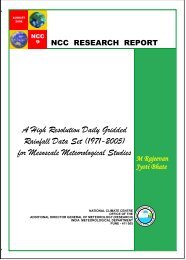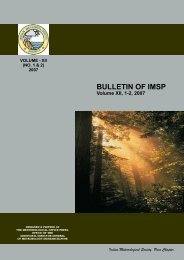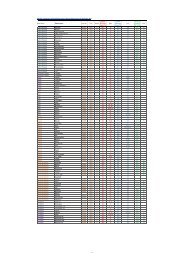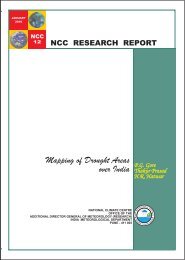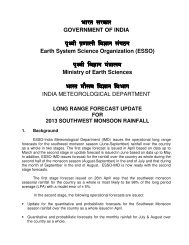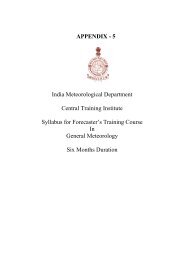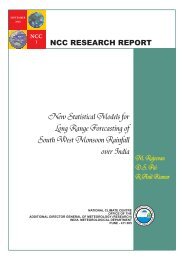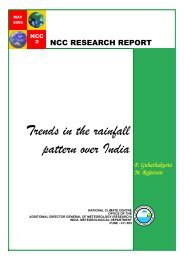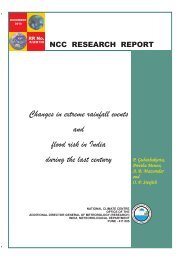Create successful ePaper yourself
Turn your PDF publications into a flip-book with our unique Google optimized e-Paper software.
47<br />
coast where surface and upper winds were strong northexlies. At this stage,<br />
rainfall had not yet commenced along Tamil Nadu coast. Satellite pictures<br />
showed that while the main heavy cloud mass was in west central and southwest<br />
Bay, there was an extension of broken to overcast clouds in the western half of<br />
the Bay extending as far north as 20°N. This was apparently due to the strong<br />
southerlies over this area in the middle and upper troposphere which had advected<br />
these clouds northwards (Fig. 17.2 b).<br />
17.2 By the next morning (7th), the low pressure area moved southwestwards<br />
and was off Sri Lanka coast (Fig. 17.3). On this day also it was seen only<br />
upto 1,0 km (Fig. 17.4). Pressure gradient continued strong along Tamil Nadu<br />
coast. The maximum negative pressure departure associated with the low was<br />
about 4 mb. With the 'low' moving towards the west, rainfall commenced along<br />
south Tamil Nadu coast. Satellite pictures showed that the heavy mass of cloud<br />
from west Bay had moved west and covered Tamil Nadu also. There was no extension<br />
of the cloud belt beyond 15°N (in contrast to the previous day) because of<br />
the changes in the middle and upper tropospheric flow patterns, where the<br />
southerlies were no longer present over the west Bay.<br />
17.3 As the system approached Sri Lanka on 8th, it apparently weakened<br />
slightly (Fig. 17.5). In the upper air, the circulation could hardly be seen,<br />
as may be inferred from the winds over Hambantota which became northeast/east<br />
upto 1.5 km (Fig. 1 7 . 6 ) . d e p a r t u r e s were maximum over Comorin and<br />
Sri Lanka<br />
southwest /indicating that the central region of the low was over these<br />
areas on the surface chart. As the low moved over to Sri Lanka (in the surface<br />
chart) rainfall suddenly increased in south Tamil Nadu where falls upto 21 cm<br />
were recorded along the coast. Monsoon became vigorous in Tamil Nadu,<br />
17.4 By 9th, the low moved into Maldives region as seen from the surface<br />
isobaric and pressure departure charts (Fig. 17.7). In the upper air, it could<br />
not be noticed at all. As the low moved west, rainfall decreased in Tamil Nadu



